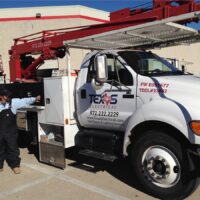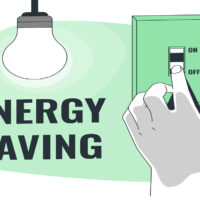An electrical outlet provides a connection point for electrical devices. It enables the safe transfer of electricity from the power grid.
Electrical outlets are essential in homes and workplaces. They power various devices, from kitchen appliances to office equipment. Modern outlets come with safety features like grounding and surge protection. Outlets vary in design and voltage, catering to different needs. Choosing the right outlet ensures efficient energy use and safety.
Regular maintenance and timely upgrades can prevent electrical hazards. Understanding outlet types and their applications helps in making informed decisions. Proper installation and use enhance the lifespan of both the outlet and connected devices. Ensuring outlets are up to code protects your home and loved ones.
Importance Of Outlet Safety
Electrical outlets are essential in every home. They power our devices and appliances. Ensuring outlet safety is crucial to prevent accidents. Unsafe outlets can cause shocks or fires.
Risks Of Unsafe Outlets
Unsafe outlets pose many risks. The most common risks include:
- Electrical Shocks: Touching a faulty outlet can cause a shock.
- Fires: Overloaded or damaged outlets can start fires.
- Property Damage: Fires can destroy belongings and homes.
- Injury: Shocks and fires can cause serious injuries.
Benefits Of Proper Maintenance
Maintaining outlets properly has many benefits. Here are some key advantages:
- Enhanced Safety: Regular checks prevent shocks and fires.
- Longevity: Proper care extends the life of outlets.
- Peace of Mind: Safe outlets mean fewer worries for families.
- Efficiency: Well-maintained outlets ensure devices work properly.
Identifying Unsafe Outlets
Electrical outlets are a crucial part of every home. Safe outlets keep our homes and loved ones secure. Identifying unsafe outlets can prevent accidents and electrical fires. This section will help you recognize signs of danger.
Signs Of Wear And Tear
Over time, electrical outlets show signs of wear and tear. Look for these common indicators:
- Discoloration: Brown or black marks on the outlet.
- Cracks: Visible cracks in the outlet cover.
- Loose Plugs: Plugs do not fit snugly in the outlet.
- Sparks: Sparks when plugging or unplugging devices.
If you notice any of these signs, replace the outlet immediately. Using a damaged outlet is risky.
Common Electrical Hazards
Unsafe outlets can lead to several electrical hazards. Understanding these can help you stay safe.
| Hazard | Description |
|---|---|
| Electric Shock | Touching exposed wires can cause a serious shock. |
| Electrical Fire | Faulty outlets can overheat and start a fire. |
| Short Circuits | Damaged outlets can cause short circuits, damaging devices. |
Prevent these hazards by inspecting your outlets regularly. Replace any outlet showing signs of damage.
Childproofing Electrical Outlets
Keeping children safe at home is a top priority. Electrical outlets can be dangerous for curious little ones. Childproofing electrical outlets can prevent injuries. Here are some effective methods to keep your children safe.
Using Outlet Covers
Outlet covers are an easy solution. They block access to electrical outlets. You can find different types of outlet covers.
- Plastic Plug Covers: Simple and cheap. Plug them into unused outlets.
- Sliding Plate Covers: Replace existing covers. Slide to access the outlet.
- Box Outlet Covers: Cover the whole outlet. Ideal for outlets in use.
Plastic plug covers are the most common. They can be removed when you need the outlet. Sliding plate covers offer more convenience. They slide open when you need to plug something in. Box outlet covers are useful for outlets always in use. They cover the plugs and wires, keeping them out of reach.
Installing Tamper-resistant Receptacles
Tamper-resistant receptacles (TRRs) are a secure option. They are designed to prevent children from inserting objects into the slots. TRRs have spring-loaded shutters. These shutters only open when equal pressure is applied to both slots.
Installing TRRs is a permanent solution. They replace standard outlets. TRRs are effective and reliable. This method is recommended for new homes and renovations.
Here is a comparison table of outlet safety options:
| Method | Ease of Use | Effectiveness | Cost |
|---|---|---|---|
| Plastic Plug Covers | Easy | Moderate | Low |
| Sliding Plate Covers | Moderate | High | Moderate |
| Box Outlet Covers | Moderate | High | High |
| Tamper-Resistant Receptacles | Easy | Very High | Moderate |
Choosing the right method depends on your needs. Outlet covers are quick and easy. TRRs provide long-term safety.
Preventing Overloads
Electrical outlets are essential in every home. But they can be dangerous if misused. Overloads can cause fires or damage devices. It’s crucial to prevent overloads to ensure safety. Below are ways to prevent electrical overloads.
Safe Power Strip Usage
Power strips are handy for plugging in multiple devices. But they have limits. Always check the power strip’s capacity before use. Do not plug high-wattage appliances into a power strip. Items like heaters or air conditioners need their outlets.
- Use power strips with built-in surge protectors.
- Avoid daisy-chaining multiple power strips together.
- Unplug devices when not in use to reduce load.
Understanding Circuit Limits
Each circuit in your home has a limit. Exceeding this limit causes an overload. Know the limits of your electrical circuits. Generally, a standard circuit can handle 15 or 20 amps. Check your home’s electrical panel for details.
| Appliance | Wattage |
|---|---|
| Refrigerator | 600W |
| Microwave | 1200W |
| Hair Dryer | 1500W |
- Calculate the total wattage of devices on a circuit.
- Divide the total wattage by the circuit voltage (usually 120V).
- Ensure the result is below the circuit’s amp capacity.
For example, a 15-amp circuit can handle up to 1800 watts (15A x 120V). Regularly check your devices’ wattage to avoid overloads.
Routine Inspections
Routine inspections of electrical outlets help keep your home safe. They prevent electrical hazards and ensure outlets work properly. Two critical checks include examining loose connections and testing ground fault circuit interrupters (GFCIs).
Checking For Loose Connections
Loose connections can cause serious problems. They may lead to electrical fires or short circuits. Follow these steps to check for loose connections:
- Turn off the power to the outlet.
- Remove the outlet cover plate.
- Inspect the screws holding the wires.
- Tighten any loose screws with a screwdriver.
Ensure all connections are secure before replacing the cover plate. Always use insulated tools to avoid shocks.
Testing Ground Fault Circuit Interrupters
GFCIs protect against electrical shocks. They are essential in kitchens, bathrooms, and outdoor areas. Test GFCIs monthly to ensure they function correctly. Here’s how:
- Press the “Test” button on the GFCI outlet.
- The “Reset” button should pop out.
- Plug a lamp or tester into the outlet.
- The device should not turn on.
- Press the “Reset” button to restore power.
If the outlet does not trip, replace it. Testing GFCIs regularly keeps your home safe from electrical shocks.
| Inspection Task | Frequency | Safety Tip |
|---|---|---|
| Check Loose Connections | Every 6 Months | Turn off power first |
| Test GFCIs | Monthly | Use insulated tools |

Credit: romanelectrichome.com
Proper Installation Practices
Ensuring the proper installation of an electrical outlet can prevent many safety hazards. Whether you hire a professional or do it yourself, following best practices is crucial. This section covers the essentials for installing outlets correctly.
Hiring A Licensed Electrician
Hiring a licensed electrician guarantees that the job meets safety standards. These professionals have the necessary training and experience to handle electrical work. Here are some benefits of hiring a licensed electrician:
- Ensures compliance with local codes
- Reduces the risk of electrical fires
- Provides a warranty for their work
Always check the electrician’s credentials and ask for references. This ensures you are hiring a qualified professional. Additionally, a licensed electrician can identify potential issues that may not be visible to an untrained eye.
Diy Installation Tips
If you prefer DIY installation, follow these tips to ensure safety and effectiveness. First, always turn off the power at the main breaker. Use a voltage tester to confirm the power is off.
- Remove the existing outlet cover and screws.
- Detach the old outlet from the electrical box.
- Connect the wires to the new outlet as per color codes.
- Secure the new outlet into the electrical box.
- Replace the outlet cover and turn the power back on.
Safety is the top priority. Use insulated tools and work in a well-lit area. If unsure about any step, consult an electrician.
Handling Electrical Emergencies
Electrical emergencies can be scary and dangerous. Knowing what to do is crucial. Proper handling can save lives and prevent damage. This section will guide you through essential steps.
Steps To Take During A Short Circuit
A short circuit can cause sparks or even a fire. Follow these steps to stay safe:
- Turn off the power: Locate the main circuit breaker and switch it off.
- Unplug devices: Remove all electrical devices from the affected outlet.
- Inspect for damage: Check for burnt marks or smells around the outlet.
- Use a fire extinguisher: If there’s a fire, use a class C fire extinguisher.
- Keep safe distance: Stay away from the outlet until the issue is resolved.
When To Call For Professional Help
Not all electrical issues can be fixed by yourself. Here’s when you need a professional:
- Repeated short circuits: If the short circuit happens often, call an electrician.
- Burnt outlet: A burnt outlet needs expert inspection and repair.
- Flickering lights: Persistent flickering lights indicate a deeper issue.
- Tripping breakers: If breakers trip frequently, it’s time for professional help.
- Electrical shocks: Experiencing shocks from outlets or switches means immediate attention is required.

Credit: www.familyhandyman.com
Educating Family Members
Teaching family members about electrical outlets is crucial. It ensures everyone’s safety and avoids potential hazards. Start with basic lessons and progress to more specific details.
Basic Electrical Safety Lessons
Begin with the fundamentals of electrical safety. Children and adults should know these lessons:
- Never insert objects into an outlet.
- Keep outlets dry at all times.
- Use plug covers for unused outlets.
Use simple terms to explain how electricity works. Share real-life examples of electrical hazards. Make the lessons interactive and engaging.
Consider a visual aid to demonstrate how to safely plug and unplug devices. This can reinforce the importance of handling outlets properly.
Importance Of Reporting Issues
Emphasize the importance of reporting electrical issues immediately. Family members should know these points:
- Report any sparks or smoke from outlets.
- Inform an adult if an outlet cover is broken.
- Notify others about flickering lights or outlets that don’t work.
Encourage open communication about electrical problems. Create a safe environment where everyone feels comfortable reporting issues. This can prevent accidents and ensure timely repairs.
Use a table to summarize key reporting points:
| Issue | Action |
|---|---|
| Sparks or smoke | Report immediately |
| Broken outlet cover | Inform an adult |
| Flickering lights | Notify others |
Regularly review these points with your family. Make it a habit to check outlets and report issues promptly. This ensures a safe and secure home environment.

Credit: www.brickkicker.com
Frequently Asked Questions
What Is An Electrical Outlet?
An electrical outlet is a socket that connects electrical devices to the power supply. It provides a safe way to access electricity.
How Do Electrical Outlets Work?
Electrical outlets work by connecting devices to the electrical grid. They have hot, neutral, and ground wires for safe power transfer.
Why Do Outlets Have Two Holes?
Outlets have two holes to connect hot and neutral wires. This ensures a complete circuit and safe power flow.
Can I Install An Electrical Outlet Myself?
Yes, but only if you’re experienced with electrical work. Always follow safety protocols and local regulations.
Conclusion
Understanding electrical outlets enhances safety and convenience. Regular maintenance prevents hazards and ensures optimal performance. Choose quality outlets for durability. Stay informed about advancements in electrical technology. Prioritize safety and efficiency in your home by updating outdated outlets. Enjoy a safer, more reliable electrical system with these simple steps.




